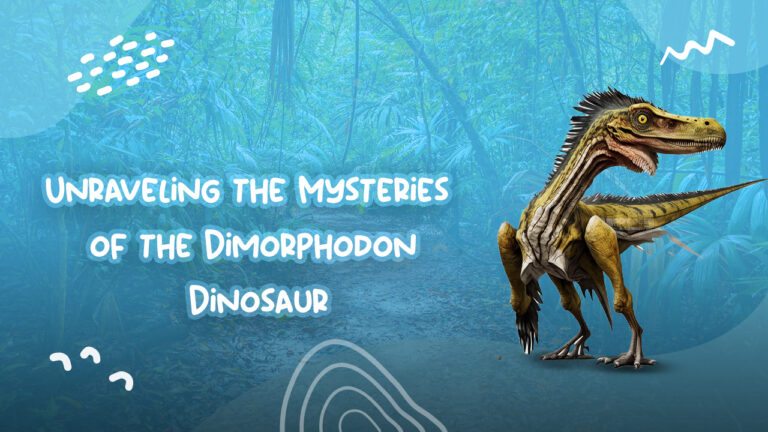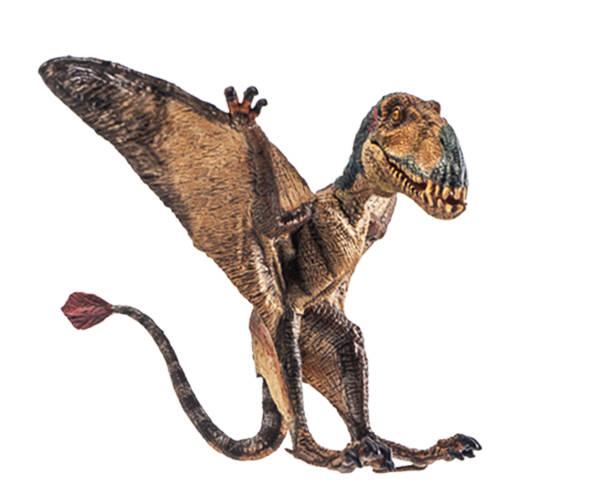Dimorphodon Dinosaur – Unveil Ancient Wonders

Journey back in time with us as we uncover the fascinating world of the Dimorphodon dinosaur! This prehistoric creature, with its unique physical attributes and flying capabilities, has piqued the curiosity of paleontologists and dinosaur enthusiasts alike.
In this blog post, we’ll delve deep into the history of this extraordinary creature, exploring its physical appearance, habitat, and behavioral patterns. By the end of our journey, you will have a comprehensive understanding and appreciation of the curious and captivating Dimorphodon dinosaur.’
Unearthing the Dimorphodon Dinosaur
The first-ever discovery of the Dimorphodon dinosaur dates back to over 200 years ago in 1828, by an English fossil collector and paleontologist, Mary Anning. This fossil was found in Southern England’s Jurassic Coast, which is a rich excavation site for ancient remnants.
First described scientifically in 1835 by English zoologist and geologist William Buckland, the Dimorphodon dinosaur initially baffled scientists due to its unusual blend of reptilian and avian features.

Decoding the Name and Classification of
The unusual name “Dimorphodon” stems from the Greek words “di,” meaning “two,” “morpho,” meaning “form,” and “odon,” meaning “tooth.” This name was selected because the creature’s skull exhibits two distinct types of teeth: sharp, pointed teeth at the front, presumably for gripping prey, and flatter, serrated teeth located towards the rear, likely for tearing and shredding its catch.
Classified as a pterosaur, a group of flying reptiles living alongside dinosaurs, the Dimorphodon dinosauris considered an early member of this diverse assembly. It’s crucial to clarify that despite popular misconceptions, pterosaurs, including the Dimorphodon, are not classified as dinosaurs; instead, they are closely related distant cousins.
Physical Appearance – A Unique Blend
One of the most striking aspects of the Dimorphodon dinosaur is its strange combination of reptilian and avian traits, making it a fascinating study for paleontologists. With an estimated wingspan of 4 to 4.9 feet (1.2 to 1.5 meters) from tip to tip, it could effectively fly through the skies. However, its short wings and large head may suggest it wasn’t the most graceful or fast flyer. Its tail, adorned with a flap of skin called a “rudder,” was most likely used to stabilize its flight.
Two notable features set the Dimorphodon dinosaur apart from other pterosaurs of its time: its short neck and the aforementioned two types of fang-like teeth. These physical characteristics hinted at a unique lifestyle and diet required for survival, leading researchers to speculate on its predatory and scavenging habits.
Natural Habitat and Diet of Dimorphodon Dinosaur
The Dimorphodon dinosaur lived approximately 190 to 200 million years ago during the early Jurassic period, specifically in regions currently known as England and Mexico. Its habitat comprised coastal regions, lagoons, and estuaries – environments brimming with marine life that served as a critical food source.
Based on its teeth and jaw structure, the Dimorphodon dinoasur was primarily carnivorous. Its prey would have included various small animals like fish, squids, and even terrestrial prey like small reptiles and mammals – essentially anything it could fit into its distinctly-shaped jaws.
Dimorphodon Dinosaur Diet
Dimorphodon dinosaur was a carnivore that fed mainly on insects such as flies, beetles, moths, cockroaches, locusts, dragonflies, termites, and spiders. It may have also eaten some small vertebrates such as lizards or frogs. It is believed to have been an active hunter that used its sharp claws to catch prey in mid-air while flying at high speeds. It could also snatch food from branches as it flew by them. Dimorphodon dinosaur lived in both terrestrial and aquatic habitats such as coasts and riversides where food was plentiful.
Behavior and Lifestyle of Dimorphodon Dinosaur
The aerial abilities of the Dimorphodon dinosaur remain a topic of ongoing debate amongst researchers. While there’s consensus on its capacity for flight, its unusual blend of features points to a potentially clumsy and slow motion through the skies. Some paleontologists theorize that the creature primarily used its wings for short bursts of flight, gliding between trees, or hopping from the ground to snatch its prey.
Ground movement and agility, on the other hand, appears to be an undisputed talent of this ancient creature. With its strong, five-fingered limbs and specialized ankle joints, the Dimorphodon dinosaur could swiftly traverse the uneven terrain of its coastal habitat in search of food and shelter.
Flight and Locomotion
The dimorphodon’s wings were covered in fibers similar to those found in modern bats. It had a relatively short wingspan compared to other pterosaurs, resulting in increased maneuverability but reduced gliding capabilities.
Consequently, it is believed that the dimorphodon was better suited for short bursts of flight, rather than long-distance travel. Some researchers speculate that the dimorphodon might have also been an adept swimmer, using its wings and tail to propel itself underwater.
Extinction of Dimorphodon Dinosaur
The exact cause of dimorphodon’s extinction is not known for sure but it is thought to have been due to changing environmental conditions during the Middle Jurassic period (174–164 million years ago). These changing conditions likely caused a decrease in available food sources for dimorphodon which ultimately led to its demise.
Significance in Paleontology
The dimorphodon’s distinctive dental arrangement and other unique features make it a crucial piece of the puzzle in understanding pterosaur evolution. Its existence demonstrates that pterosaurs were a diverse group early in their history, with various adaptations allowing them to occupy different ecological niches. The dimorphodon also highlights the importance of female fossil collectors like Mary Anning, whose discoveries have significantly impacted our understanding of prehistoric life.
Dimorphodon dinosaur was an impressive pterosaur that ruled the skies during the Middle Jurassic period (174–164 million years ago). With its distinctive diamond-shaped head crest and large wingspan, this animal was able to fly at high speeds while hunting insects and other small vertebrates for its meals. Although we don’t know exactly what caused dimorphodon’s extinction millions of years ago, it is clear that this ancient animal made an important impact on our planet’s history!
Conclusion
Our exploration of the enigmatic world of the Dimorphodon dinosaur has given us insight into its unique existence during the early Jurassic period. With its bizarre appearance, intriguing hunting habits, and puzzling flight capabilities, this fascinating creature continues to captivate researchers and history enthusiasts alike. As scientific advances allow us to unearth more clues about this ancient flyer and its pterosaur relatives, our understanding of these remarkable reptiles will continue to evolve, enriching our knowledge of Earth’s fascinating prehistoric past.
Check out The Top 10 Smallest Dinosaurs.

Top posts
related articles
Discover The Top 10 Longest Dinosaur Names
Dinosaurs, the ancient giants that once roamed the Earth, continue to capture our imagination. While
Discover the Amazing Dinosaur with 500 Teeth
Dinosaurs have always fascinated us with their colossal size, unique features, and intriguing mysteries. One
Acheroraptor – Tiny But Fierce Dinosaur
The dinosaur world is undoubtedly fascinating, and the relative discovery of the Acheroraptor is no
Amazing Cryolophosaurus- An Epic Tale
Cryolophosaurus, also known as the ‘Antarctic King’, was a fierce and fascinating dinosaur that existed
Discover Torosaurus And Its Mysterious Identity
Dinosaurs don’t exist anymore, but their fossils still fascinate us. Paleontologists scour the earth to
Corythosaurus–Exploring Its Wondrous World
The world of dinosaurs never stops fantastic us. From the huge T-rex to the tiny


